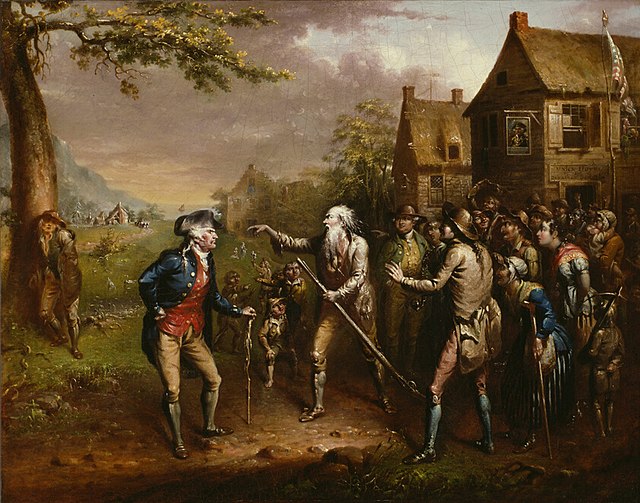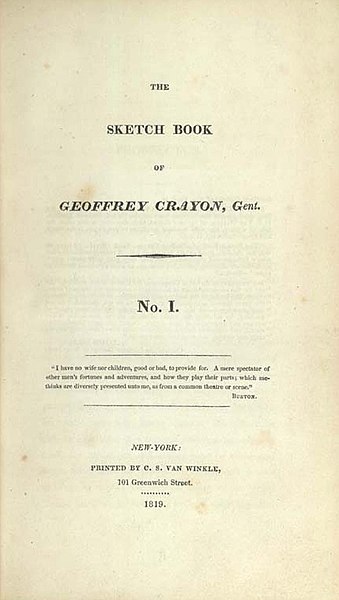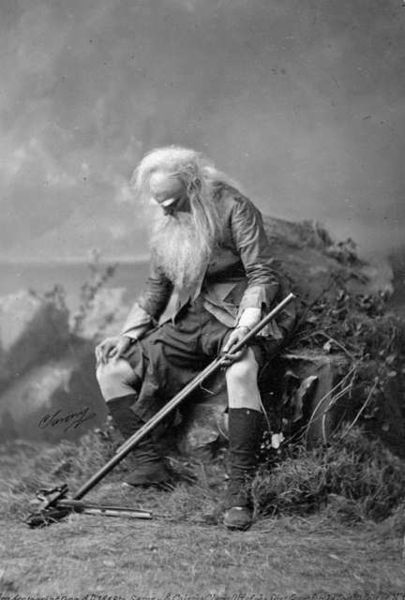"Rip Van Winkle" is a short story by the American author Washington Irving, first published in 1819. It follows a Dutch-American villager in colonial America named Rip Van Winkle who meets mysterious Dutchmen, imbibes their strong liquor and falls deeply asleep in the Catskill Mountains. He awakes 20 years later to a very changed world, having missed the American Revolution.
Depiction of Rip Van Winkle by John Quidor (1829). Housed at Art Institute of Chicago.
Depiction of Rip Van Winkle by Thomas Nast (c. 1875). Housed at Yale University Library.
First installment of The Sketch Book of Geoffrey Crayon, Gent. (1819) included "Rip Van Winkle"
Joseph Jefferson as Rip Van Winkle (1896)
Washington Irving was an American short-story writer, essayist, biographer, historian, and diplomat of the early 19th century. He wrote the short stories "Rip Van Winkle" (1819) and "The Legend of Sleepy Hollow" (1820), both of which appear in his collection The Sketch Book of Geoffrey Crayon, Gent. His historical works include biographies of Oliver Goldsmith, Muhammad, and George Washington, as well as several histories of 15th-century Spain that deal with subjects such as the Alhambra, Christopher Columbus, and the Moors. Irving served as American ambassador to Spain in the 1840s.
Daguerreotype of Washington Irving (modern copy by Mathew Brady, original by John Plumbe)
Watercolor of Washington Irving's encounter with George Washington, painted in 1854 by George Bernard Butler Jr.
The fictional "Diedrich Knickerbocker" from the frontispiece of A History of New York, a wash drawing by Felix O. C. Darley
Portrait of Washington Irving by John Wesley Jarvis from 1809








